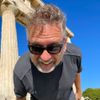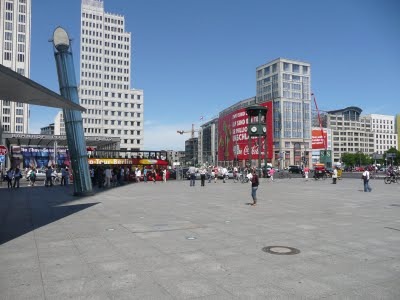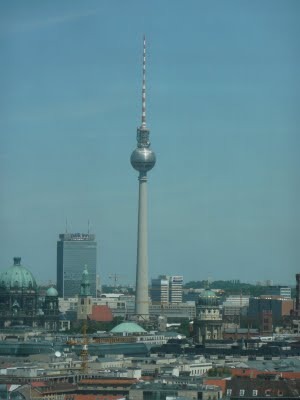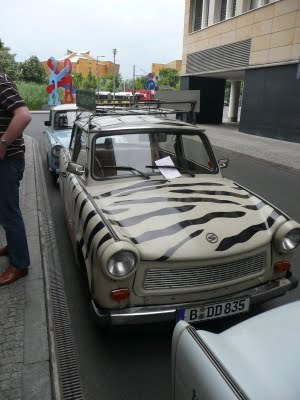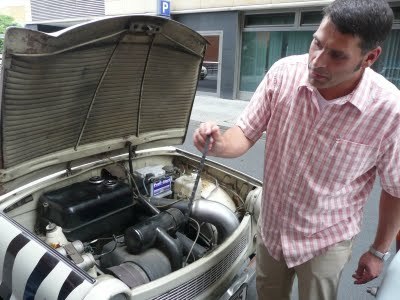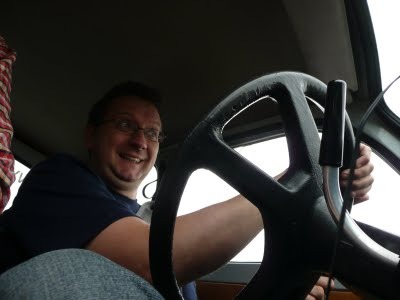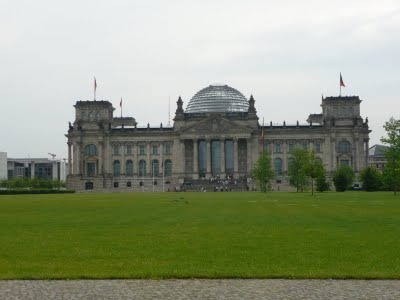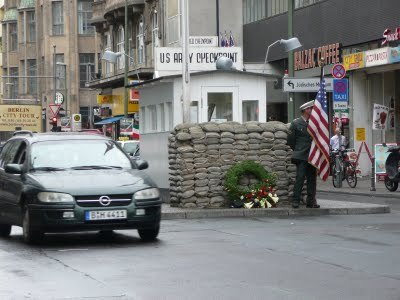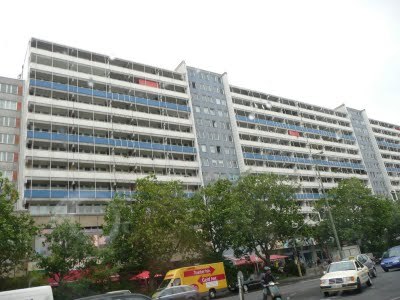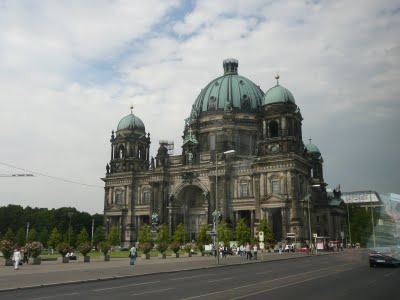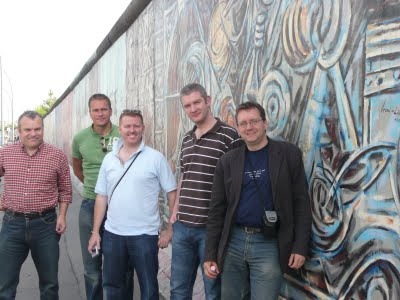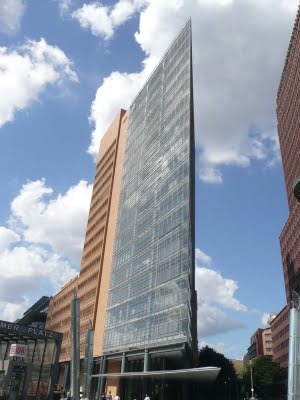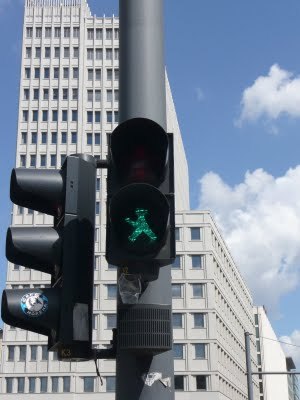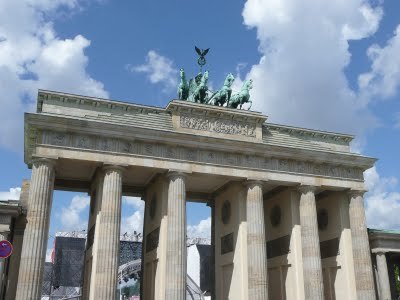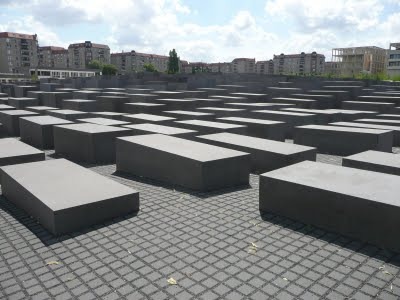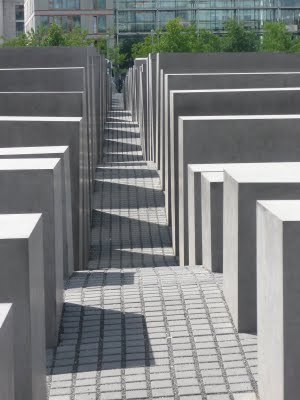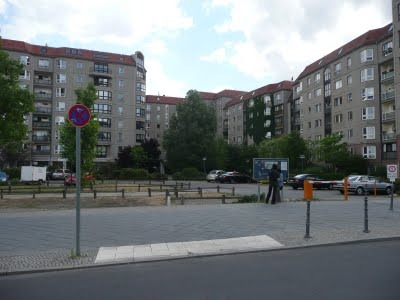Ich bin ein Berliner
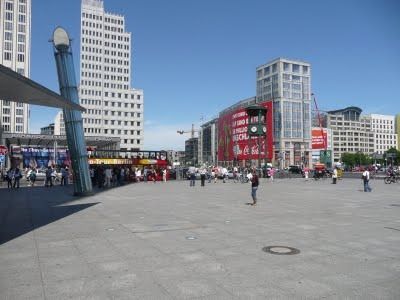
I returned yesterday from a final wrap up meeting for our project in Berlin. Unusually, partially because this was the last meeting, we had time for some organised activities. I was really impressed with Berlin as a city, it’s got a fascinating history, both ancient and through to more recent times with the second world war in particular and then the cold war and the Berlin Wall.
This is Potsdamer Platz, the Berlin Wall used to run right through here. Actually thinking of it as a wall is a little mis-leading, it was actually two walls, an inner and an outer wall with a large area called the “killing ground” in between which could be as much as 200 metres wide. When the wall came down, this left a lot of land for building modern buildings.
The view from our office meeting room of the radio / tv tower. It was built as a symbol of communist glory by the soviets. The west berliners apparently laughed because when the sun shone (as it is in this photo) there was an image of a cross in the middle, the symbol of chirstianity.
One of the touristy things we did was a “trabi-safari” The Trabant was an East German car with a two-stroke engine, 24 horse power and made of cloth and resin. It was incredibly simple and was in production virtually unchanged from 1963 to 1989! It’s now considered a cult car and the Trabi-Safari is a guided tour of Berlin where you get to drive these in convoy while listening to a guide over the radio.
Here our guide is showing us how you use a manual dipstick to measure the petrol as the car doesn’t have an actual fuel gauge!
You can see from this shot that the Trabant is very small inside. In fact, on the drivers side, the wheel arch takes so much space that the pedals are off-set from the steering wheel, so you feel like you are sitting a bit crooked!
The Reichstag, restored after being bombed.
This is the old checkpoint Charlie, now a tourist trap and busy main road!
East Berlin is full of this style of apartment, which despite the cheery face lift of colour, all still look pretty drab.
I can’t remember what this building was (and old church I think), but it’s a classic example of modern Berlin, wonderful old buildings and architecture with lots of modern new buildings in the centre.
The “Eastside Gallery” is the longest section of the wall remaining and was decorated in 1991, but now falling into dis-repair again. This is me and most of the “gang” from work. Someone said this looks like a band photo.
Looking up at the PricewaterhouseCoopers building, a modern classic. The buildings in Berlin are all extremely environmentally friendly. In this building, you could actually open the windows for natural airflow and the lights in the lift well switched off after only a couple of minutes.
This little man with a hat was the East Berlin sign for “walk”. They are only used in Berlin. The EU wanted to standardise them but the Berliner’s resisted — they are very proud of him.
On the last day, after a big night out, I got up and went for a walk with one of the guys. We headed to the Brandenburg gate. You can see a stage behind it, on the Wednesday night was the Semi-Final of Euro 2008 (the Football) and Germany made the Finals. There were Germans partying on the streets well into the wee hours. We gave up at 4AM and they were still on the street singing “Finale…. Oh eh ee oh” (to the tune of that classic Italian song I can’t remember).
This is the monument to the murdered jews of Europe. Berlin is heavy with this kind of memorial symbolism, buildings for Jews, museums of commemoration, buildings divided in two over the river with bridges in between to symbolise the divide of East and West etc. It’s all very interesting to have it explained, but there is no doubt that the pst weighs heavy on some Berliners at least.
You can wander through the monument “to find your own way”. Each of the concrete stones is a different height and set on slightly different angle, so it’s all a little disconcerting. In the centre, the ground drops down and you are surrounded by tall concrete blocks towering above your head which is also noticeably cooler than the outside. It was great to walk through and contemplate; actually I was glad the kids weren’t there because it would of just been one huge playground to them.
Finally, this very plain carpark is where Hitler’s bunker was (actually still is) buried underneath. It’s no longer accessible, but he committed suicide just beneath here at the end of the war. This was all in the Soviet sector and they simply bulldozed over the top and put up housing. A fitting end in many ways. The sign showing the bunker complex in the foreground only went up a couple of years ago, a further sign the Berliners are beginning to come to terms with their history, which to be honest, is really fascinating and interesting as an outsider.All in all, a fantastic work trip and a great wrap up to the project.
